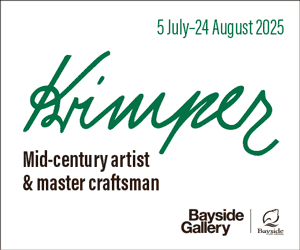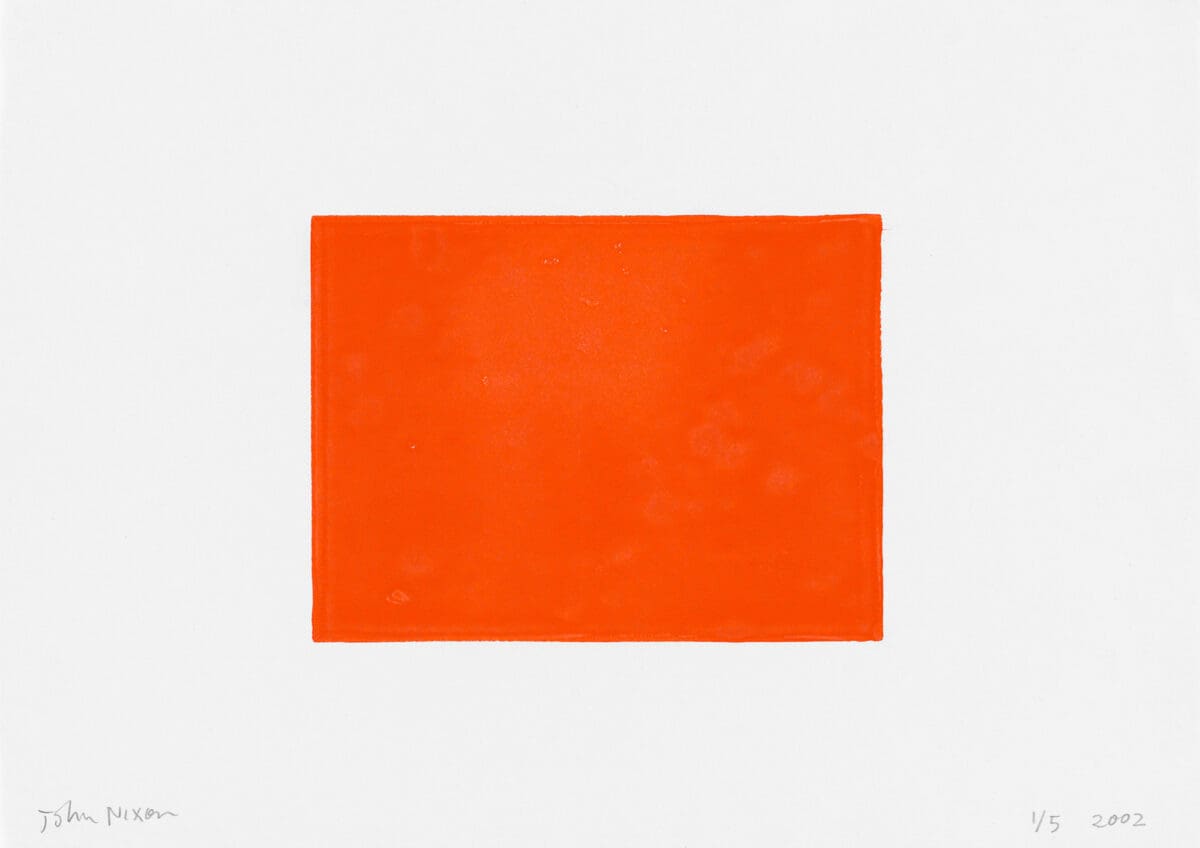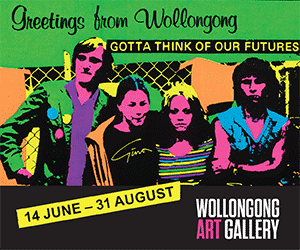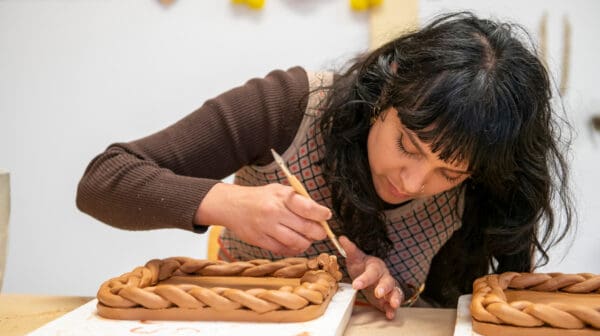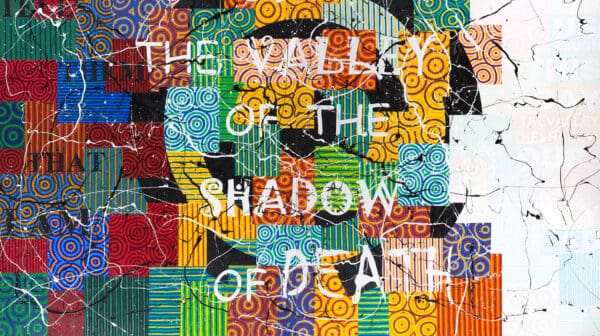It’s the early 1980s at Victorian College of the Arts in Melbourne and John Nixon is having a lively conversation with a student. Nixon is struck by how this student describes the printmaking process of etching and asks for a demonstration. With the roles of teacher and student reversed, Nixon’s nascent printmaking practice began to grow. It’s effortless for me to imagine this scenario, where Nixon’s curiosity spurred a willingness to learn something new.
“While Nixon is primarily known for his paintings, his five-decade-long practice dedicated to radical modernism generated an expansive approach to minimalist and non-objective art spanning drawing, experimental music, performance, photography, publishing and, one of his lesser-known practices, printmaking.”
I first met Nixon in 2017 on a warm March evening after leaving Melbourne’s TCB Gallery. I had just given a poetry reading and once stepping onto the bluestone pavement, I saw Kaho Hashimoto, an artist I read alongside. As I approached, she introduced me to her friend, John Nixon. There was no small talk, with Nixon generously sharing his thoughts about my performance and asking questions about my work. Our friendship started here.
This story is one that many local artists could tell about Nixon, cementing not merely his generosity, but his minimal distinction between art and life as influenced by Russian Constructivism. This philosophy afforded Nixon the possibility to create a staggering body of work that, during his lifetime, established him as one of Australia’s most significant abstract artists. While Nixon is primarily known for his paintings, his five-decade-long practice dedicated to radical modernism generated an expansive approach to minimalist and non-objective art spanning drawing, experimental music, performance, photography, publishing and, one of his lesser-known practices, printmaking.
Nixon once said that “To be an artist is to question the nature of art.” And question he did. Nixon’s exploration of printmaking is now on show for John Nixon—Four Decades, Five Hundred Prints at Geelong Gallery. It’s the first survey of Nixon’s printmaking, and his experimental essence is manifested through varying printmaking techniques including potato prints, woodcuts and Xerox prints, alongside more intricate screenprints, stone lithographs and etchings. True to Nixon’s unification of art and life, the exhibition is curated by his wife Sue Cramer, his daughter Emma Nixon, and close collaborator Trent Walter.
“We’re sitting at the kitchen table in the Briar Hill house Cramer shared with John and Emma up until Nixon’s death in 2020. I’m in a space I have always imagined, recalling how the intonations in Nixon’s voice always altered with affection when referring to his home as “Briar Hill”—as if it was another world.”
As Cramer explains, working with Nixon’s printmaking archive has “been a journey of discovery… we had to acquaint ourselves with all 500 prints. And 500 is a round number. There are more than 500, but we rounded it off because nobody’s going to count.” We’re sitting at the kitchen table in the Briar Hill house Cramer shared with John and Emma up until Nixon’s death in 2020. I’m in a space I have always imagined, recalling how the intonations in Nixon’s voice always altered with affection when referring to his home as “Briar Hill”—as if it was another world.
I ask Cramer, a respected curator and writer, what we can expect from this epic exhibition. Cramer pauses and replies, “If you walk into the exhibition, what will be striking is the diversity of the types of work. With a print show, you might be expecting a certain kind of display, perhaps works in frames—and there are works in frames…but there’s a lot on tables as well, this style of presentation evoking John’s idea of the workshop, the prints vary in size from large to small, and they are all non-objective abstractions… they are things in themselves.”
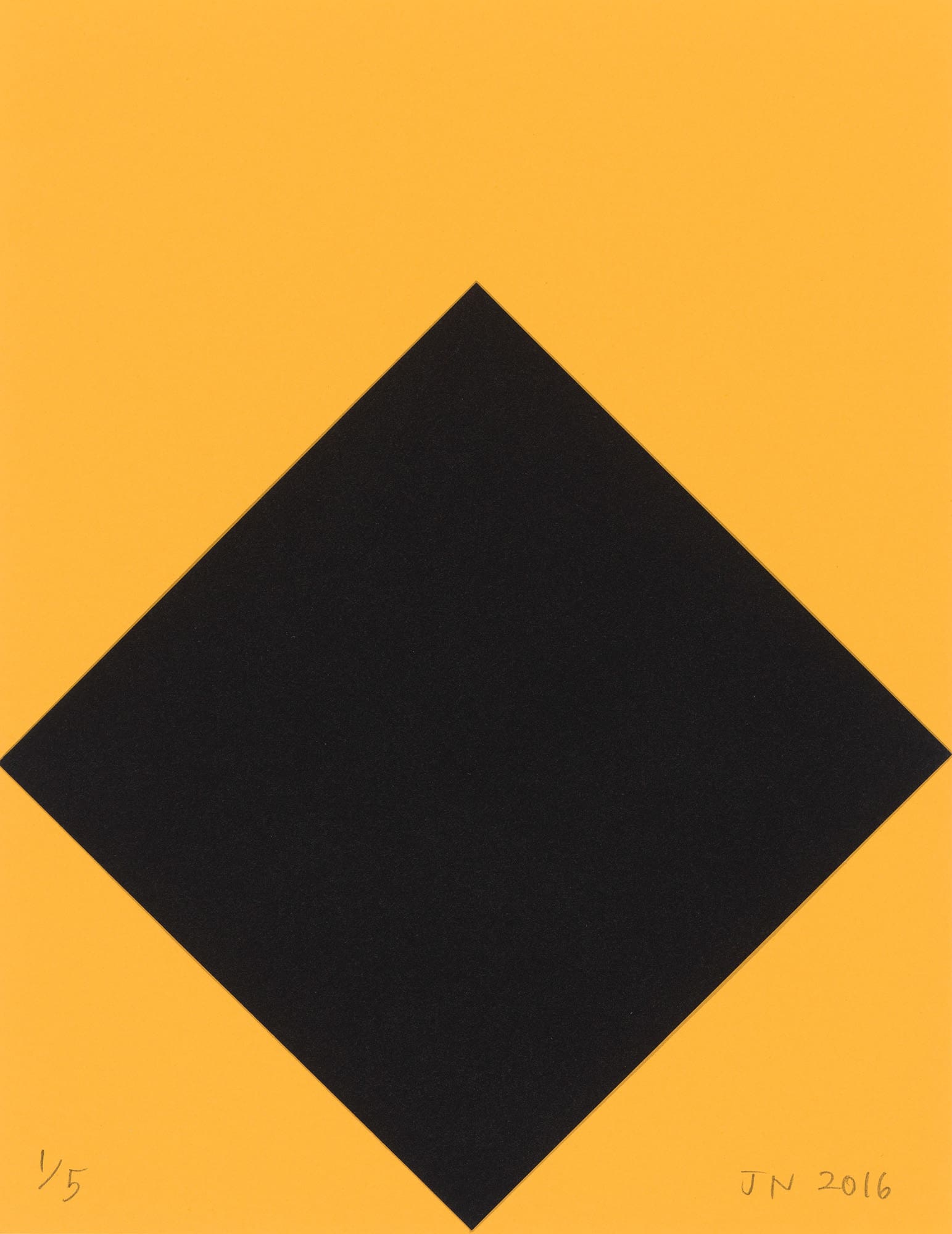
Cramer’s description of “things in themselves” echoes Nixon’s artmaking ethos inspired by Arte Povera methods of utilising discarded materials: gathering used etching plates, picking up pieces of wood during walks with Cramer, and recycling pieces of paper and receipts that no longer expressed an intended value. Collecting and repurposing materials were fundamental to Nixon’s artmaking approach. “I think for John, it began as an economic thing as a young artist, but it was also philosophical,” says Cramer. “It was what he believed. And it also came from a kind of punk spirit, his resourcefulness, and do-it-yourself approach.”
“He liked to produce iterations on a theme and not labour for long hours on a single work. He believed in productivity…but his work was always done with a great deal of care and attention, and a great deal of specificity.”
Considering the prolific output of Nixon’s artmaking, one might ask, how? “John never stopped being an artist,” says Cramer. “He liked to produce iterations on a theme and not labour for long hours on a single work. He believed in productivity…but his work was always done with a great deal of care and attention, and a great deal of specificity.” Nixon also had a sincere non-hierarchal approach to artmaking—never attributing any material or artwork with different levels of importance. As Cramer explains, “For John, all the materials he used have an equal place as different expressions of art and experimentation and connection to daily life…printing onto newspaper was of equal value to printing onto expensive papers like cotton rag—which he only occasionally did.”
“Nixon’s approach to printmaking is profoundly poetic”
While Nixon’s art and experimentalism fascinated Walter, he was unprepared for the artist to arrive unannounced in 2015 at Walter’s print studio c3 Contemporary Art Space, in Abbotsford, with a bag full of plastic meat and biscuit trays—and the idea of using them as print matrices. This was the first of countless meetings between Walter and Nixon, who alongside artist Lizzie Boon and other assistants, began archiving Nixon’s extensive printmaking work. “The thing that’s unique was just being able to archive with John and having his method of categorisation, which is different to how it would be perceived if the work went straight to a museum,” says Walter.
Nixon’s approach to printmaking is profoundly poetic and I express this to Cramer. “I definitely think he was a poet,” confirms Cramer. “He was a poet of materials. He was a poet of textures, colour and form…I’m quite certain of that and it’s one of his touchstones.”
John Nixon—Four Decades, Five Hundred Prints
Geelong Gallery (Geelong VIC)
On now—11 March
This article was originally published in the January/February 2023 print edition of Art Guide Australia.

